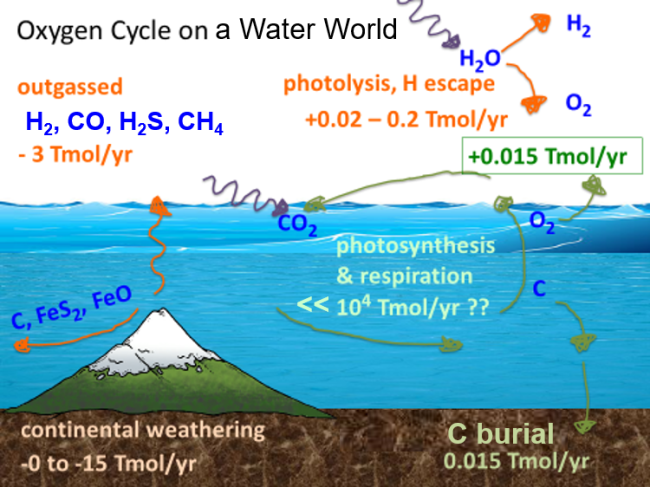Abstract:
Biogeosciences as a branch of the Earth and Life Sciences integrates theory from geology, chemistry, biology and physics to address questions across spatial and temporal scales including the very large and the very long. The biogeosciences evolved from studies of the modern Earth, but they are relevant for Earth’s deep past and even for exoplanets. Exoplanets may provide the ultimate test of our understanding of biogeochemical cycles. Planets around other stars may be habitable, but our challenge for detecting life on these planets will be to distinguish the BIOgeochemical rates and fluxes of a living planet, from the strictly geochemical and physical processes of an abiotic planet. However, our knowledge of the ratios of biogeochemically relevant elements available on exoplanets is very limited and hinders our ability to predict planetary-scale biogeochemical processes. I will compare the ratios of bioessential and rock-forming elements (e.g., C, N, P, S, and Mg, Si, Ca, Fe) for living systems, for our Solar System, and for nearby stars. For example, phosphorus is critical for life on Earth but its distribution in our solar system and in nearby stars is quite variable. The distribution and availability of phosphorus on different planet types could dramatically affect the detectability of biosignature gases like oxygen on exoplanets. The range in C:P and in other elemental ratios result from differences in stellar composition, planet formation and differentiation processes, and possibly the presence of life. Future work to detect life on exoplanets will require a coordinated effort, where the biogeosciences provide a crucial theoretical framework that informs data collection and modelling from astrophysics and planetary science.
Speaker: Dr. Hilairy E. Hartnett, Arizona State University
Date: Wednesday, 12 February, 10:00-11:00 at Mishima Hall (ELSI-1)
Host: John Hernlund
Biogeosciences as a branch of the Earth and Life Sciences integrates theory from geology, chemistry, biology and physics to address questions across spatial and temporal scales including the very large and the very long. The biogeosciences evolved from studies of the modern Earth, but they are relevant for Earth’s deep past and even for exoplanets. Exoplanets may provide the ultimate test of our understanding of biogeochemical cycles. Planets around other stars may be habitable, but our challenge for detecting life on these planets will be to distinguish the BIOgeochemical rates and fluxes of a living planet, from the strictly geochemical and physical processes of an abiotic planet. However, our knowledge of the ratios of biogeochemically relevant elements available on exoplanets is very limited and hinders our ability to predict planetary-scale biogeochemical processes. I will compare the ratios of bioessential and rock-forming elements (e.g., C, N, P, S, and Mg, Si, Ca, Fe) for living systems, for our Solar System, and for nearby stars. For example, phosphorus is critical for life on Earth but its distribution in our solar system and in nearby stars is quite variable. The distribution and availability of phosphorus on different planet types could dramatically affect the detectability of biosignature gases like oxygen on exoplanets. The range in C:P and in other elemental ratios result from differences in stellar composition, planet formation and differentiation processes, and possibly the presence of life. Future work to detect life on exoplanets will require a coordinated effort, where the biogeosciences provide a crucial theoretical framework that informs data collection and modelling from astrophysics and planetary science.
Speaker: Dr. Hilairy E. Hartnett, Arizona State University
Date: Wednesday, 12 February, 10:00-11:00 at Mishima Hall (ELSI-1)
Host: John Hernlund

